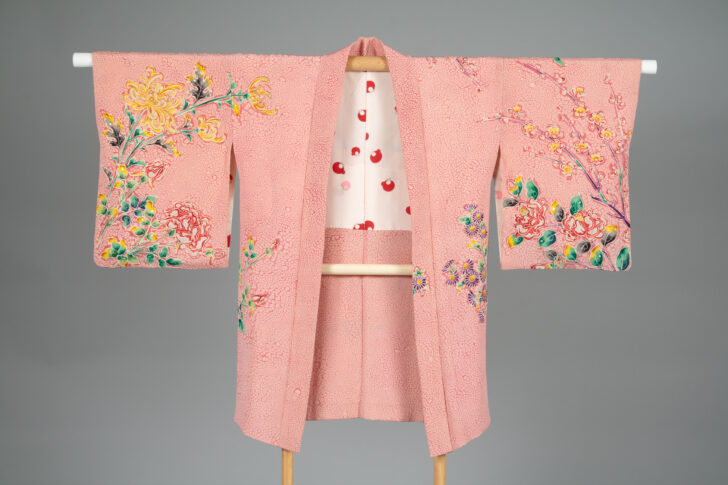Haori
Minagawa Gekka

Description
Minagawa Gekka
Japanese, 1892–1987
Haori
Showa period (1926-1989)
circa 1950
Crepe silk with wax-resist pattern, hand-painted designs, and embroidery
Gift of Howard and Patricia Yamaguchi, 2013/2.416
In the Edo period (1615–1868) the haori was a type of formal attire for men, but in the nineteenth century it was adopted by female entertainers in the capital, Edo (present-day Tokyo), as a cloak for outdoor wear in mild weather. Later the haori became the standard outerwear for women who dress in kimono outside the home.
This colorful haori was created by Minagawa Gekka, one of the greatest innovators in modern textile art. Gekka’s work is characterized by a profusion of motifs from nature and exceptionally complex techniques. The design of this haori combines a mix of birds and flowers and plum, chrysanthemum, camellia, and peony trees. The plants, birds, and family crest were drawn in paste (which resists the dye) and the fabric was then dyed with the base colors. Next, the crackled-ice pattern was added using an age-old wax-resist technique. After the paste was washed away to expose the white silk, the flowers were hand painted in colorful shades (the white lines around the patterns are unpainted). Finally, he added embroidery in various metallic and velvet threads.
Physical Description:
Light pink crinkle design all-over, with red, purple and yellow flowers, some embroidered and also sequins applique.
Usage Rights:
If you are interested in using an image for a publication, please visit https://umma.umich.edu/request-image/ for more information and to fill out the online Image Rights and Reproductions Request Form.